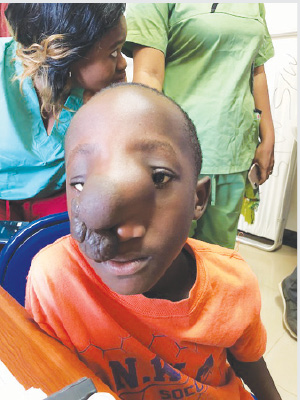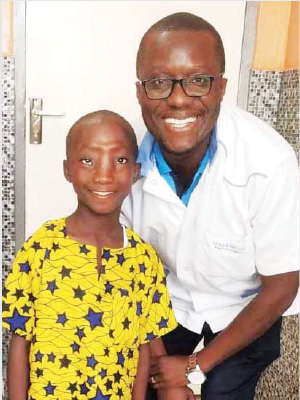Neurosurgical supports, from BC to West Africa
A British Columbian neuroscience charity is delivering neurosurgical support in the most ill-equipped corners of West Africa. Korle-Bu Neuroscience Foundation (KBNF) was founded in 2002 by Vancouver General Hospital neuroscience nurse Marj Ratel. The organization has since developed an extensive international network of neurosurgical supports that recently saved the life of an 8-year-old Liberian patient named Samuel, who was born with nasal encephalocele.
Samuel was born with multiple skull and facial defects, which pushed his brain down inside his face and nasal area. Last fall, the large cyst-like facial defect protruded from his nasion and extended past the nostrils. The life-threatening deformity was so severe it obstructed Samuel’s vision and prompted him to quit school in order to avoid being bullied. KBNF members in Liberia connected the patient to neurosurgeon Dr Dan Miulli who, wearing a headlamp as a precaution against failing electricity in Liberia, led a team of experts through 9 hours of surgery.
The procedure was made possible by a Zeiss double-headed neurosurgical microscope, which had been donated by Victoria General Hospital and shipped from BC to Liberia via ship, crane, plane, jet, and truck. A shunt was placed in Samuel’s temporal arachnoid cyst to relieve pressure on the brain and allow the reintroduction of viable brain in the intracranial cavity. Nearly 1 year later, Samuel is planning to return to school with ambitions to become a doctor.
Liberia has just a single neurosurgeon serving approximately 5 million people. Over the past 17 years, KBNF has transported more than an estimated $17 million retail value of medical supplies overseas, and has supported and trained 10 neurosurgeons in West Africa. Visit www.kbnf.org to learn more about the foundation’s work, get involved, or donate.
—Jeremy Hunka
Korle-Bu Neuroscience Foundation
 |
 |
| Samuel, prior to the surgery. | Samuel and Dr Alvin Nah Doe, a KBNF member and Liberia’s sole neurosurgeon, who participated in Samuel’s surgery and treatment. |

